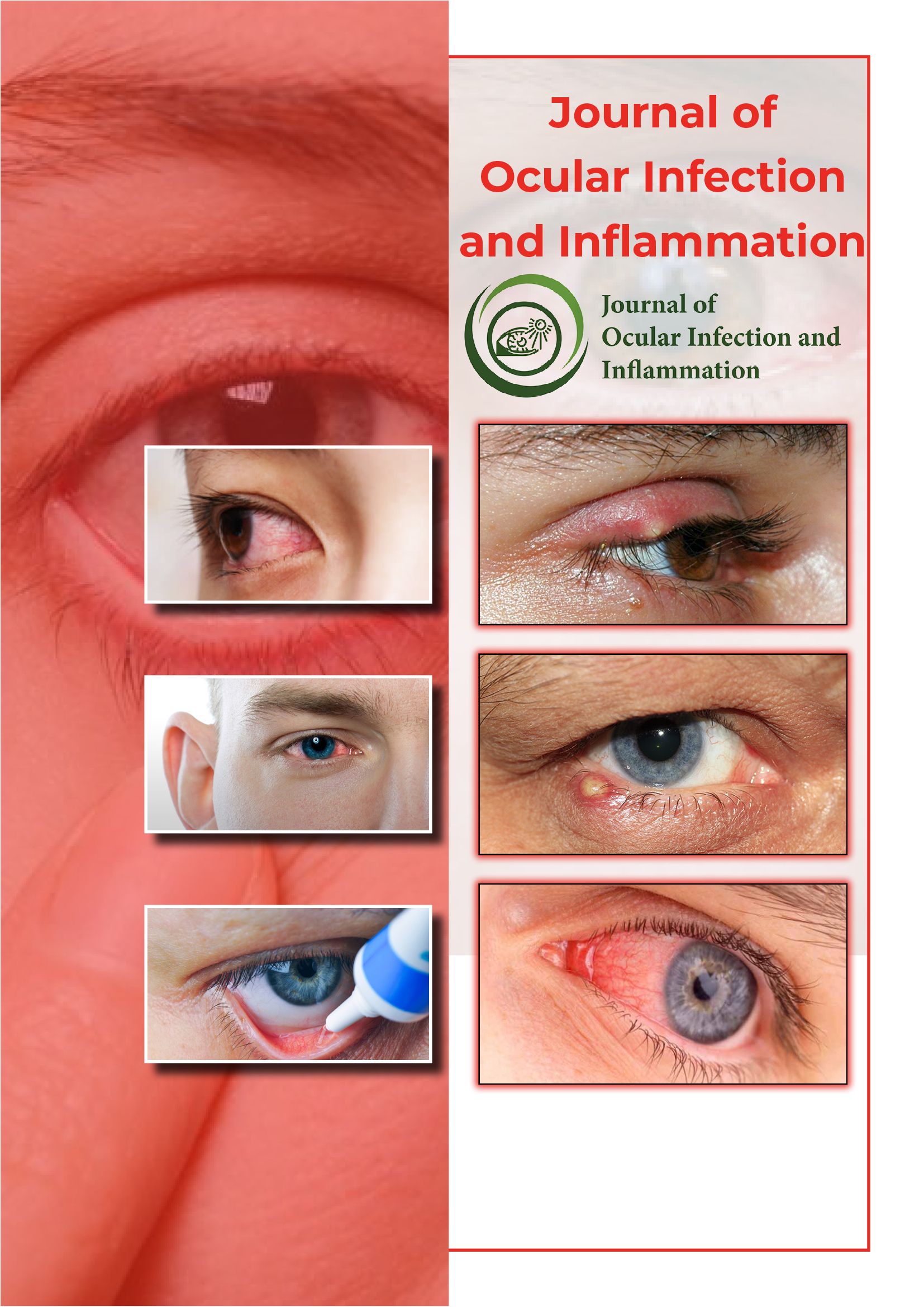Useful Links
Share This Page
Journal Flyer

Open Access Journals
- Agri and Aquaculture
- Biochemistry
- Bioinformatics & Systems Biology
- Business & Management
- Chemistry
- Clinical Sciences
- Engineering
- Food & Nutrition
- General Science
- Genetics & Molecular Biology
- Immunology & Microbiology
- Medical Sciences
- Neuroscience & Psychology
- Nursing & Health Care
- Pharmaceutical Sciences
Perspective - (2023) Volume 4, Issue 1
Overview of Causes of Conjunctivitis and their Prevention
Behroozian Pierluigi*Received: 02-Jan-2023, Manuscript No. JOII-23-20968; Editor assigned: 04-Jan-2023, Pre QC No. JOII-23-20968 (PQ); Reviewed: 18-Jan-2023, QC No. JOII-23-20968; Revised: 25-Jan-2023, Manuscript No. JOII-23-20968 (R); Published: 01-Feb-2023, DOI: 10.35248/JOII.23.04.111
Description
Conjunctivitis, commonly known as "pink eye," is an inflammation of the conjunctiva, which is the thin, clear tissue that covers the front surface of the eye and lines the inside of the eyelids. Conjunctivitis can be caused by various factors, including viral, bacterial, allergic, or irritant triggers. Recognising the causes and appropriate treatment options for conjunctivitis is crucial in managing this common eye condition.
Viral conjunctivitis is the most common form of conjunctivitis and is often caused by the same viruses that cause the common cold. It is highly contagious and can spread easily through contact with contaminated hands or objects. Viral conjunctivitis typically causes redness, watery discharge, and itching in one or both eyes. It may also be accompanied by cold-like symptoms such as sneezing and a runny nose. Viral conjunctivitis usually resolves on its own within a week or two, and treatment is generally supportive, including using artificial tears to relieve symptoms and practicing good hygiene to prevent the spread of the virus.
Bacterial conjunctivitis is caused by bacteria such as Staphylococcus aureus, Streptococcus pneumoniae, or Haemophilus influenzae. It is also highly contagious and can spread through contact with contaminated hands or objects. Bacterial conjunctivitis often presents with symptoms similar to viral conjunctivitis, including redness, discharge (which may be thick and yellow or green), and itching. Bacterial conjunctivitis is typically treated with antibiotic eye drops or ointments to eradicate the bacteria. It is important to complete the full course of antibiotics as prescribed by a healthcare professional to ensure complete resolution of the infection and prevent recurrence.
Allergic conjunctivitis is caused by allergens such as pollen, dust mites, pet dander, or mold spores. It is not contagious and is usually associated with other allergic symptoms such as sneezing, nasal congestion, and itching in the eyes, nose, and throat. Allergic conjunctivitis can affect both eyes and may be seasonal or perennial, depending on the allergen trigger. Treatment options for allergic conjunctivitis include avoiding the allergen trigger, using over-the-counter or prescription antihistamine eye drops to relieve symptoms, and using cool compresses to soothe the eyes.
Irritant conjunctivitis can be caused by various irritants, such as smoke, chemicals, foreign objects, or contact lens solutions. It is not contagious and usually affects only one eye. Irritant conjunctivitis can cause redness, tearing, and discomfort in the affected eye. Treatment involves removing the irritant, rinsing the eye thoroughly with clean water, and using artificial tears to lubricate the eye and relieve symptoms. If the symptoms persist, it is important to seek medical attention.
In addition to the various causes of conjunctivitis, there are certain risk factors that may increase the likelihood of developing this condition. These include a history of conjunctivitis, recent exposure to someone with conjunctivitis, poor hygiene practices, use of contact lenses, and certain underlying health conditions, such as allergies or autoimmune disorders.
Preventing the spread of conjunctivitis is crucial in managing this condition. Good hygiene practices, such as frequent hand washing, avoiding touching the eyes with unwashed hands, and using clean towels and tissues, can help prevent the spread of conjunctivitis. It is also important to avoid sharing personal items, such as towels, eye makeup, or contact lenses, with others to prevent cross-contamination.
Citation: Pierluigi B (2023) Overview of Causes of Conjunctivitis and their Prevention. J Ocul Infec Inflamm. 04:111.
Copyright: © 2023 Pierluigi B. This is an open-access article distributed under the terms of the Creative Commons Attribution License, which permits unrestricted use, distribution, and reproduction in any medium, provided the original author and source are credited.

